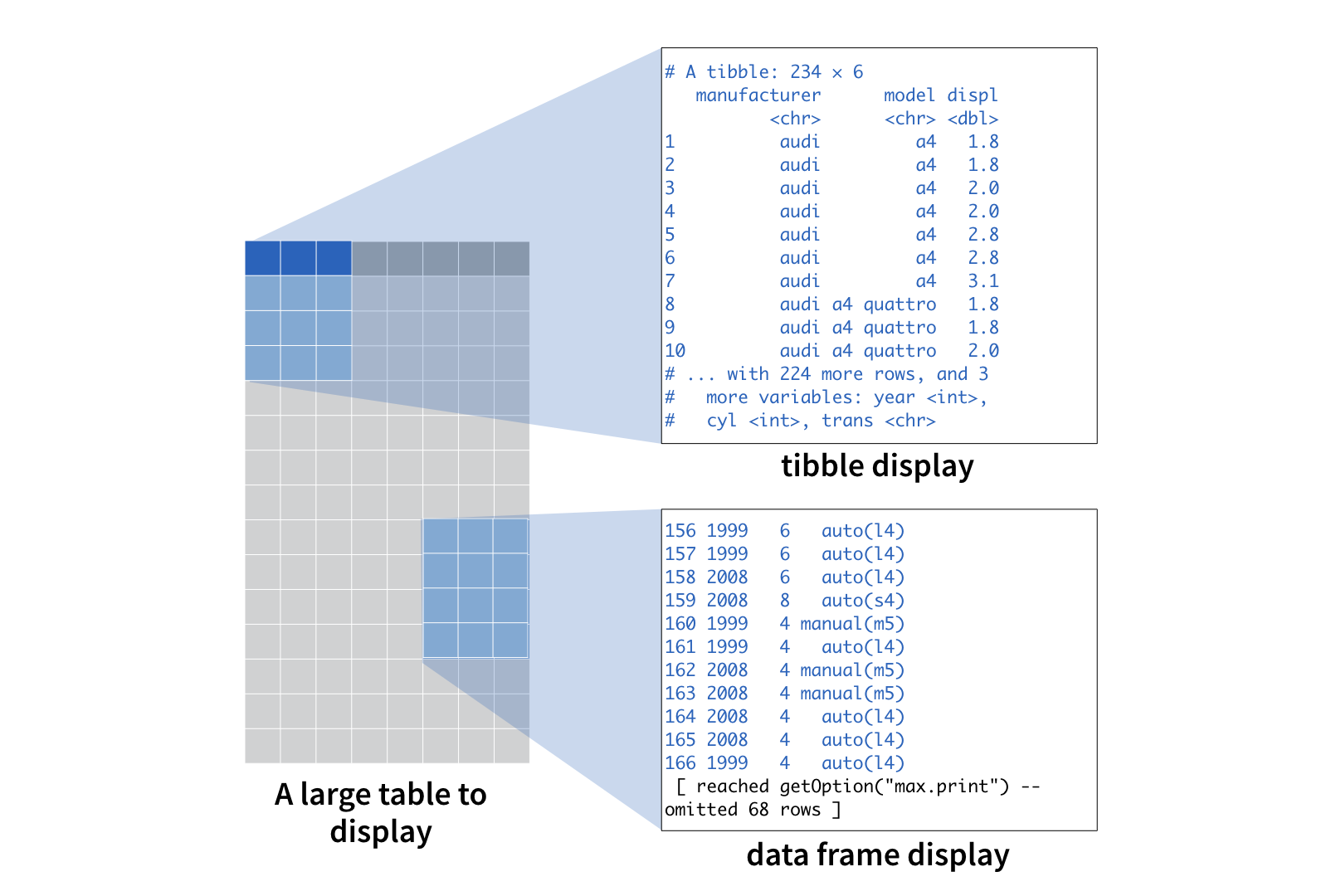View(babynames)Tibbles
What is a tibble?
A tibble is a special type of table. R displays tibbles in a refined way whenever you have the tibble package loaded: R will print only the first ten rows of a tibble as well as all of the columns that fit into your console window. R also adds useful summary information about the tibble, such as the data types of each column and the size of the data set.
Whenever you do not have the tibble packages loaded, R will display the tibble as if it were a data frame. In fact, tibbles are data frames, an enhanced type of data frame.
You can think of the difference between the data frame display and the tibble display like this:

as_tibble()
You can transform a data frame to a tibble with the as_tibble() function in the tibble package, e.g. as_tibble(cars). However, babynames is already a tibble. To display it nicely, you just need to load the {tibble} package.
To see what I mean, use library() to load the tibble package in the chunk below and then call babynames.
library(tibble)
library(babynames)
babynamesExcellent! If you want to check whether or not an object is a tibble, you can use the is_tibble() function that comes in the tibble package. For example, this would return TRUE: is_tibble(babynames).
View()
What if you’d like to inspect the remaining portions of a tibble? To see the entire tibble, use the View() command. R will launch a window that shows a scrollable display of the entire data set. For example, the code below will launch a data viewer in RStudio.
View() works in conjunction with the software that you run R from: View() opens the data editor provided by that software. Unfortunately, this tutorial doesn’t come with a data editor, so you won’t be able to use View() today (unless you open RStudio, for example, and run the code there).